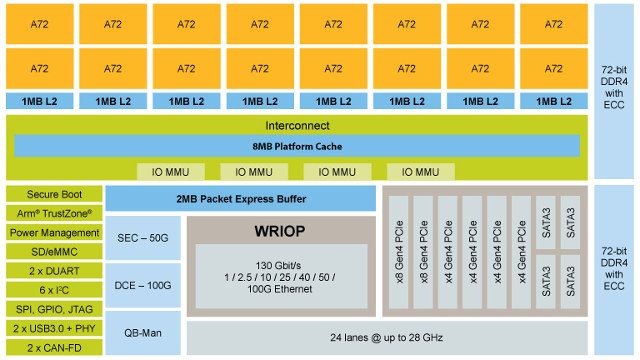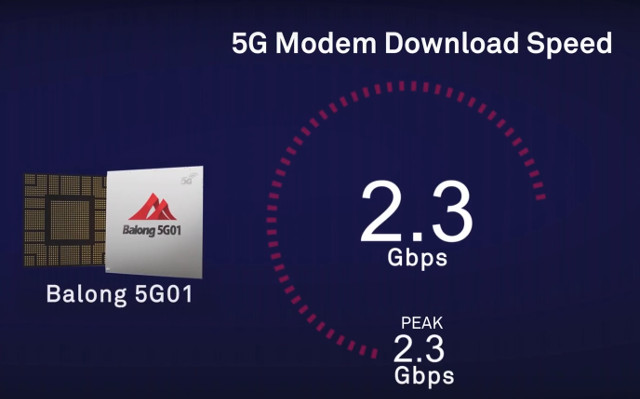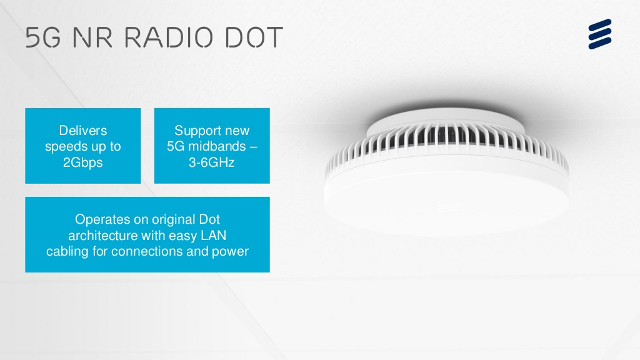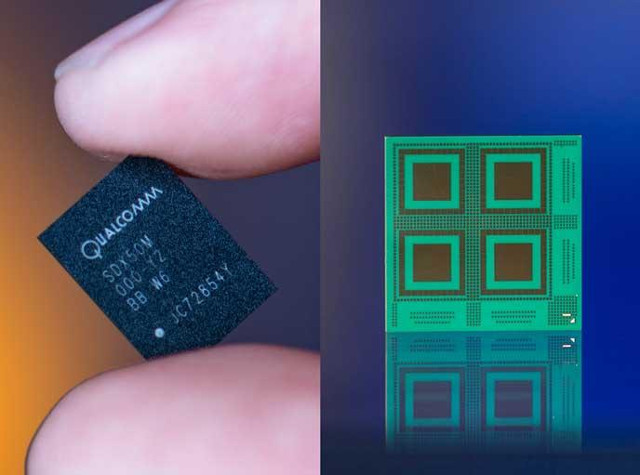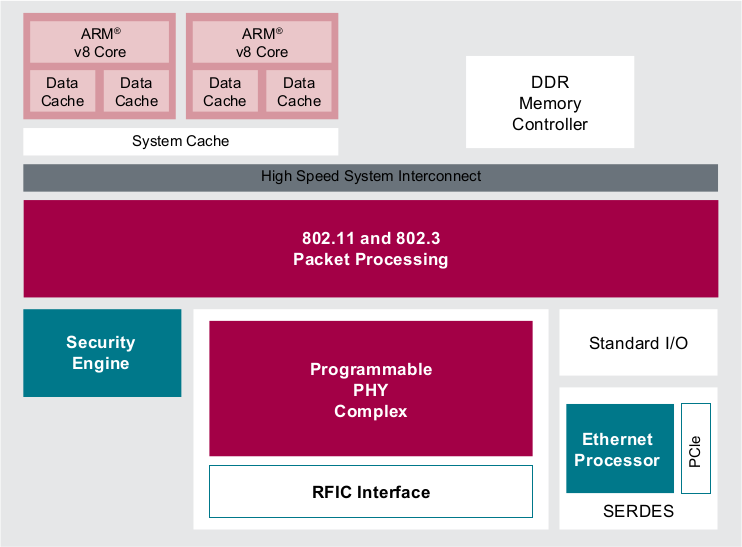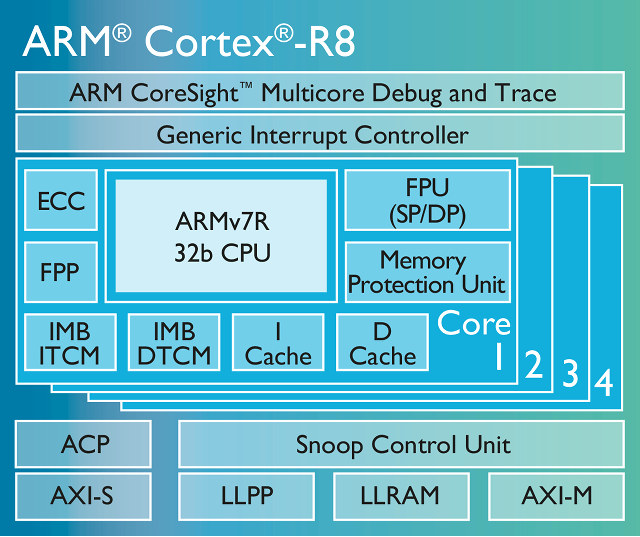NXP Semiconductors has been working on a high-end communication processor with their QorIQ LayerScape LX2160A SoC equipped with 16 Arm Cortex A72 cores, 16 Ethernet ports supporting 1 to 100 Gbit/s, as well as 24 PCIe Gen4 lanes, and four SATA 3.0 ports. NXP LX2160A key specifications / features: Processor – 16x Arm Cortex-A72 CPU cores, running up to 2.2GHz with 8MB L2 cache, 8MB platform cache Memory I/F – 2 x DDR4 72b including ECC, up to 3200 MT/s, maximum capacity of 256 GB Storage – 4 x SATA3.0 Ethernet Up to 16 Ethernet ports Supported Ethernet speeds include 1, 2.5, 10, 25, 40, 50, and 100 gigabits per second 130Gbps Layer 2 Ethernet switch PCIe – Up to 24 PCIe Gen4 lanes, supporting ports as wide as x8 24 SerDes lanes, operating up to 28GHz Acceleration Engines – 50Gbps security accelerator, 100Gbps data compression/decompression engine Security – Secure […]
Huawei Unveils Balong 5G01 5G Cellular Modem Chip, and 5G Routers
5G will start to take off in 2019. so we should be expecting hardware announcement this year, after having seen solutions by Qualcomm and Ericsson previously, Huawei has unveiled their Balong 5G01 5G Arm SoC and 5G CPEs (Customer Premise Equipment) / routers at Mobile World Congress 2018. We don’t have a whole information about the chip, except it’s a 64-bit Arm based SoC compatible with 3GPP telecommunication standard for 5G working with both sub-6 GHz and mmWave bands, and capable of achieving 2.3 Gbps peak throughput. Huawei Balong 5G01 chip is found in two HUAWEI 5G CPE, basically 5G WiFi router, one working at sub 6 GHz (low frequency) comprise of one indoor deice, and the other working at mmWave bands (high frequency) that requires two devices one indoor, one outdoor to receive the signal, since the latter would have troubles going through walls. The CPEs come with high […]
Ericsson Unveils 5G Radio Dot for Better 5G Indoor Coverage
5G cellular technology is coming sometimes in 2019, before ramping up in 2020 in several countries. The new 3GPP standard will allow maximum bandwidth up to 10 Gigabit per second, and we’ve already seen announcements such as Snapdragon X50 5G Modem which will be able to reach up to 5 Gbps download speeds. 5G apparently works at either high bands starting at 28 GHz and up to 60 GHz, which means 5G signal might have a really hard time penetrating through walls or other obstacles, or at mid bands between 3.5 and 5 GHz which will still be a challenge compared to 4G LTE operating between 600 MHz and 3.5 GHz. That means that signal from outdoor base station won’t be able to penetrate in all building, so 5G indoor small cells will be necessary for good indoor coverage. Ericsson has already unveiled their own small cells with 5G radio […]
Snapdragon X50 5G Modem Makes it First Data Connection
5G technology is expected to launch in 2019, and Qualcomm has recently made a step towards this goal with the company announcing their first 5G data connection with Snapdragon X50 modem on on 28GHz mmWave Spectrum. The demonstration took place in Qualcomm Technologies’ laboratories in San Diego, and achieved Gigabit download speeds using several 100 MHz 5G carriers. Snapdragon X50 5G Modem’s product page lists some of the key features of the chip: Up to 5 gigabits per second download speeds Initial support for operation in the 28 GHz millimeter wave band. It can connect using up to 800 MHz of bandwidth via 8×100 MHz carrier aggregation. Supports advanced multiple input, multiple output (MIMO) techniques such as adaptive beamforming and beam tracking Composed of the modem as well as the SDR051 mmWave transceiver The modem can be paired with a Snapdragon processor to provide multi-mode 4G/5G capability, and the company […]
NXP QorIQ LayerScape LA1575 Programmable Wireless SoC to Support 5G, 802.11ax & 802.11ad WiFi, and Wireline
NXP has recently announced QorIQ LayerScape LA1575 programmable wireless platform with two ARMv8 cores, and simultaneous multi-standard support for 5G, Wi-Fi (802.11 ac and 802.11ax) and Wireline systems for enterprise and high-end home gateways. QorIQ LayerScape LA1575 key features and specifications: Multicore ARMv8 Processors for user applications DDR4 with ECC Programmable accelerator engines for signal processing. Programmable low latency MAC layer processing engines Programmable high performance packet processing engines to over 10 Gbps Configurable cryptographic offload engines Simultaneous multi-standard support for 5G, Wi-Fi (802.11 ac and 802.11ax) and Wireline systems Multiple Ethernet interfaces including 10Gbps PCIe gen 3.0 Integrated Trust architecture Single source clocking The main benefit of this SoC is that is is programmable, so even if some standards evolve after the release, it can be re-programmed to reflects the changes in specifications. Just to refresh everybody’s memory: 5G is the successor of 4G/LTE scheduled to start (Wave 1) around 2018, […]
ARM Cortex-R8 Real-Time Processor targets SSDs, LTE Advanced and 5G Modems, and Other Embedded Applications
ARM Cortex-A processor may get all the media buzz as they are found in popular consumer devices such as smartphones, but ARM also provides Cortex-R processors with real-time capabilities that are found in cars, hard drives, and other embedded systems requiring high reliability, fault tolerance, and deterministic real-time responses. The company has just announced Cortex-R8 real-time core that should double the performance of Cortex-R7 core, and targeting mainly storage devices such as SSDs and HDDs, as well as next generation LTE and 5G modems. Cortex-R8 key features: Microarchitecture – 11-stage pipeline with instruction pre-fetch, branch prediction, superscalar and out of order execution, register renaming, parallel execution paths for load-store, MAC, shift-ALU, divide and floating-point. Also features a hardware divider and is software compatible with the ARM9, ARM11, Cortex-R4, Cortex-R5 and Cortex-R7 embedded processors. Instruction Set – ARMv7-R architecture with Thumb-2 and Thumb. Support for DSP extensions, as well as an […]


